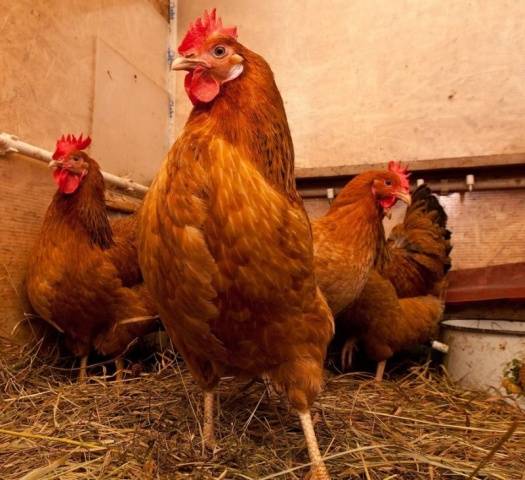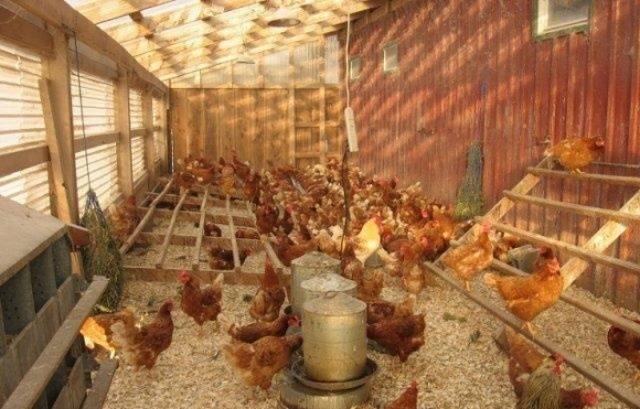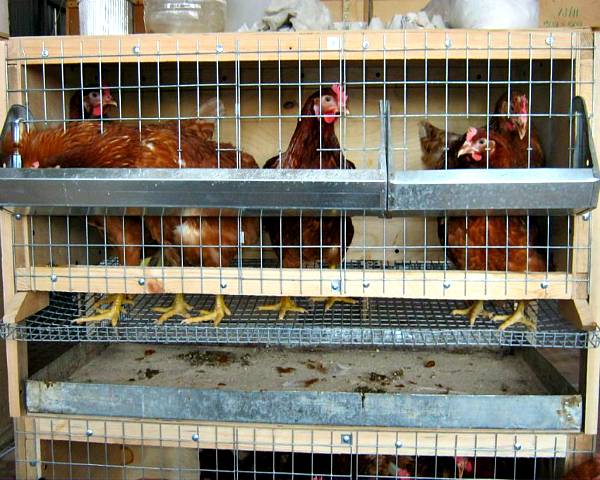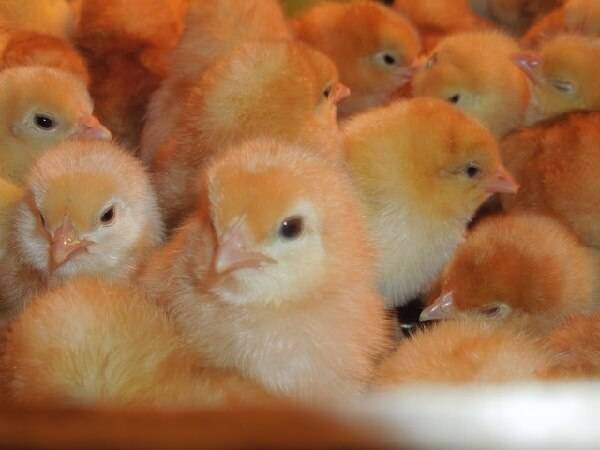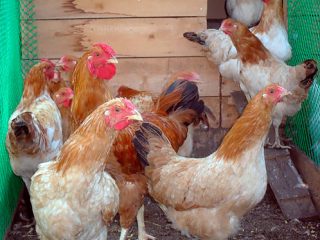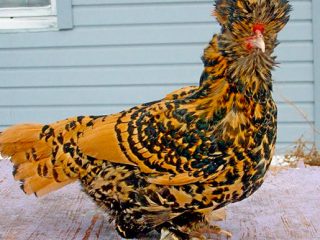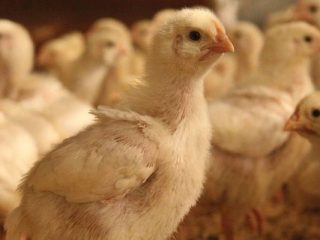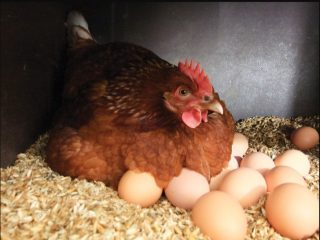Content
In 1995, at the Labinsky breeding plant in the Krasnodar Territory, work began on the development of a domestic egg breed for industrial use. Rhode Islands and leghorns... Then a new egg breed appeared, called the red Kuban chicken. Officially, the breed is registered under the name "UK Kuban - 7" and is more of a cross than a full breed. Breeding work on the Kuban breed of chickens is being carried out today. The goal of the breeders is to increase the egg production of the breed.
Description of the breed
Kuban chickens, referring to the egg direction, have a decent weight for laying hens: a chicken weighs 2 kg, a rooster weighs 3 kg. Red Kuban is an early maturing breed. Pullets begin laying at 4 months. The Kuban laying hen lays 340 eggs per year. Egg weight 60-65 g. The shell is the same as that of loman-brown, that is, brown. The meat characteristics are also good. The meat of the Kuban chickens is tender and juicy.
However, experienced farmers generally do not leave any bird, except for peacocks, for the second year, since the maximum egg production is in females of the first year of life.
How not to go wrong when buying a laying hen
Exterior of the breed
With a relatively massive body, the Kuban red breed of chickens has an elegant light skeleton and a small head. The ridge is leaf-shaped, red. The lobes and earrings are red, but the lobes may have whitish spots. The face is light pink or red.
The neck is short, with a high set. The back and loin are wide and straight. The tail, on the other hand, is set low. The rooster sometimes continues the line of the back. The chest is broad and well muscled. The wings fit snugly to the body. Feet are strong, set wide apart. Metatarsus are light.
The color of the Kuban red laying hen does not always correspond to its name. The plumage may contain white or black feathers, although the main color remains auburn or light brown. The plumage is dense.
At this age, the sex of common chicks is often not yet possible to determine. Therefore, sometimes such indicators are called autosex. At the beginning of the breeding of the breed, 9 lines were obtained from the parental crosses, in which the genes for silver and gold are linked to the sex. But basically, the autoskexity of chickens is shown by the speed of feathering.
Keeping chickens of the Kuban breed
Chickens of the Kuban breed have strong immunity only if the conditions of keeping and feeding are observed. Like any cross-cage content, chickens are afraid of dampness and when building a chicken coop, it is necessary to ensure that there is no dampness. It is necessary to provide forced ventilation in the chicken coop. If this is not possible, arrange a window and regularly ventilate the room, making sure that there are no drafts.
To prevent chickens from contaminating the litter with food and water, drinkers with feeders are placed above the floor. The height is calculated so that the chicken can eat and drink calmly, but cannot climb into the pallet with its paws.
To lay eggs, chickens arrange wooden boxes on the floor with a bed of straw. To prevent eggs from getting dirty in the droppings, the litter is changed as it gets dirty.
To ensure good egg production, chickens are given a daylight hours of at least 12 hours. If the length of the day is shorter in winter, use artificial lighting.
The temperature in the chicken coop should not drop below -2 ° C. Kuban red chickens are thermophilic and can freeze scallops at lower temperatures. Trying to warm up, chickens will begin to consume incredible amounts of feed.
The Kuban reds also do not tolerate the summer heat well. At temperatures above + 27 ° C, chickens stop eating. The eggshell quality deteriorates. It gets too thin. In some cases, chickens lay eggs completely without shells in the heat. And it looks like it's a legacy of the Loman Brown.
The comfortable temperature range for this breed of chickens is 17-19 ° C. Such conditions can be provided for laying hens only in a modern factory equipped with climate control.
The diet of the red Kuban breed of chickens
Cross UK Kuban - 7 is also picky about feed. In the diet of red Kuban chickens, cereals should prevail, accounting for about 50% of the total diet. Red Kuban has a high need for protein food, therefore, the diet must include feed containing plant and animal protein:
- peas;
- soy;
- alfalfa;
- cottage cheese;
- milk whey;
- meat and bone meal;
- meat broth.
To replenish calcium, feed chalk, crushed eggshells or shells should be present in the diet.
In spring, vitamin and mineral premixes are added to the feed for chickens. In summer, chickens are given grass and greens from the garden. For winter, you can prepare hay from alfalfa or clover. But we must make sure that the leaves remain in the hay. From dry hay, chickens will be able to peck only foliage and flower petals. They cannot eat tough alfalfa and clover straw. After the chickens have selected the leaves, the straw can be used as bedding.
In hot weather, dairy products sour very quickly, which can lead to digestive problems in chickens.
The specifics of breeding the Kuban red breed
When breeding a herd of chickens of the red Kuban breed in such a way that there are 10 chickens for 1 rooster. Kuban red chickens are not very good hens, like their parent breeds. For breeding, eggs of the red Kuban breed are removed and placed in an incubator or under chickens of other breeds. The breed of hens is selected from those that sit well on eggs and drive chickens.
Photo of chickens of the Kuban chicken.
Chicken of the Kuban breed immediately after hatching has a golden color and acquires an "adult" red color only after juvenile molt. The survival rate of chickens of the red Kuban breed is 95%.
Reviews of private owners
Conclusion
The Kuban red breed of chickens is unlikely to be able to win the attention of chickens in the near future. With a high egg production, the breed could benefit from unpretentiousness to conditions of keeping and feed, as well as resistance to stress. Unfortunately, she does not have these qualities yet. Poultry farmers, when choosing between the UK Kuban-7 cross and an industrial foreign hybrid, will still prefer a hybrid. In terms of the degree of "capriciousness", these crosses are the same, but the foreign ones have higher egg production.

